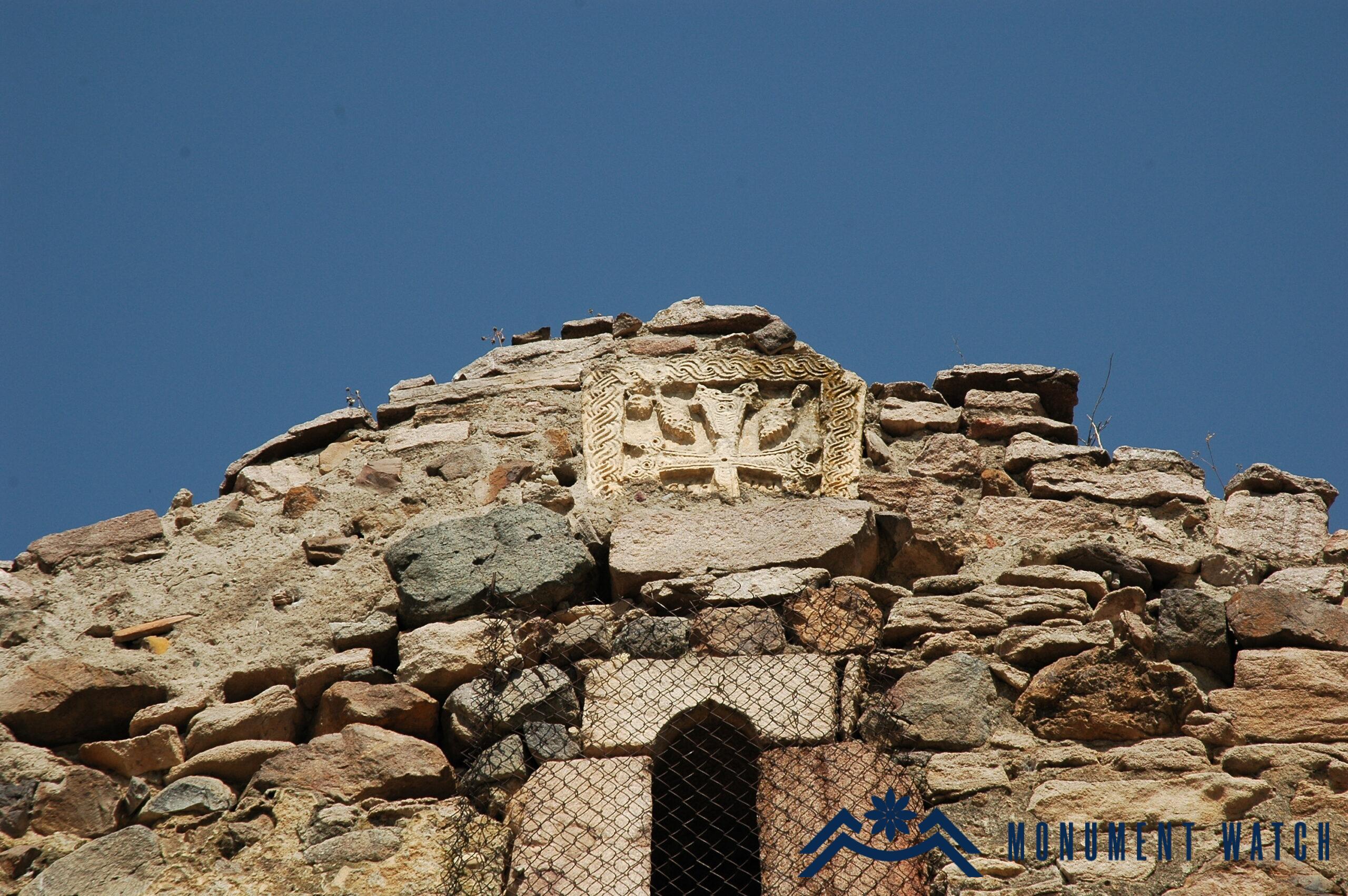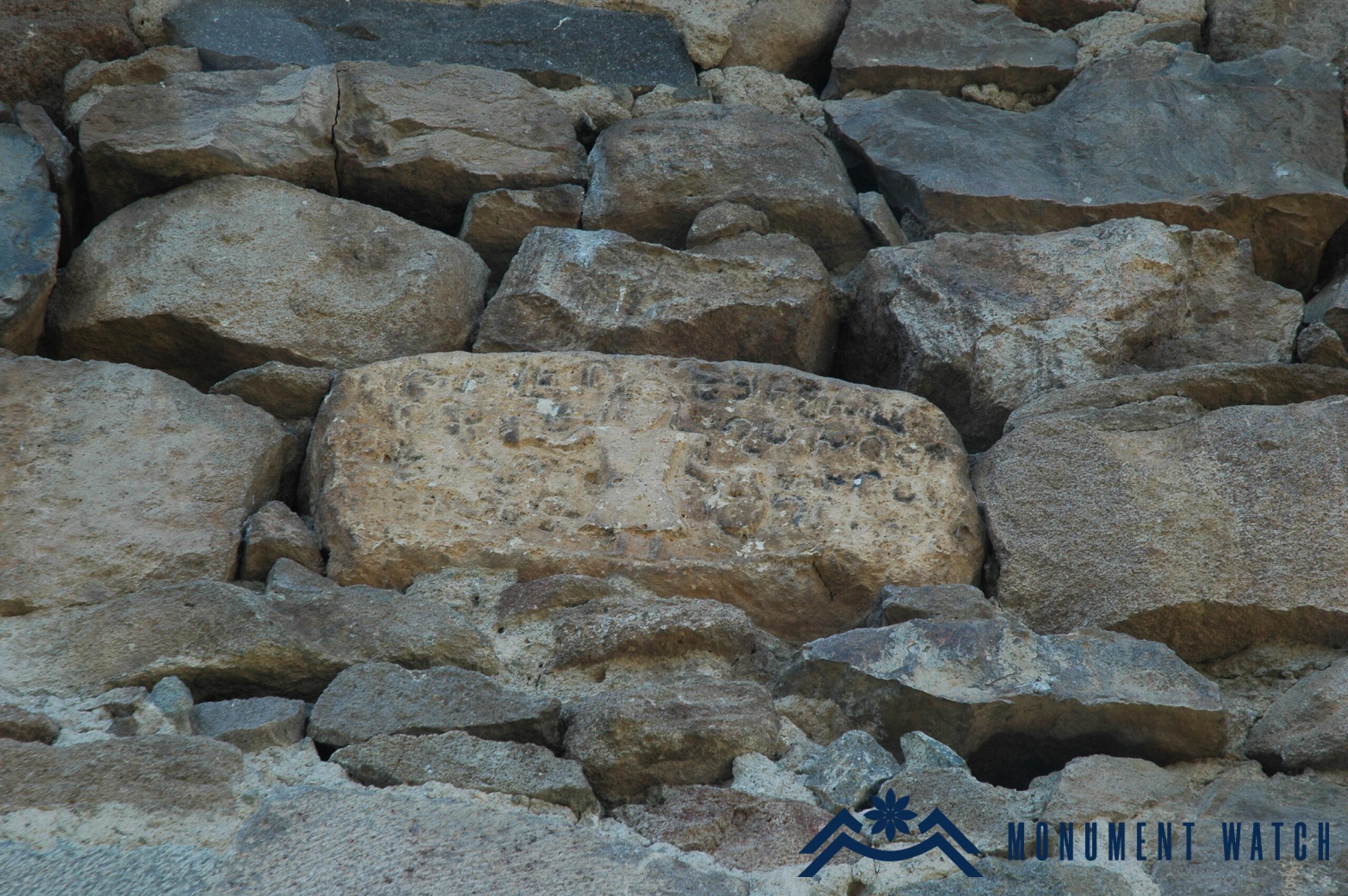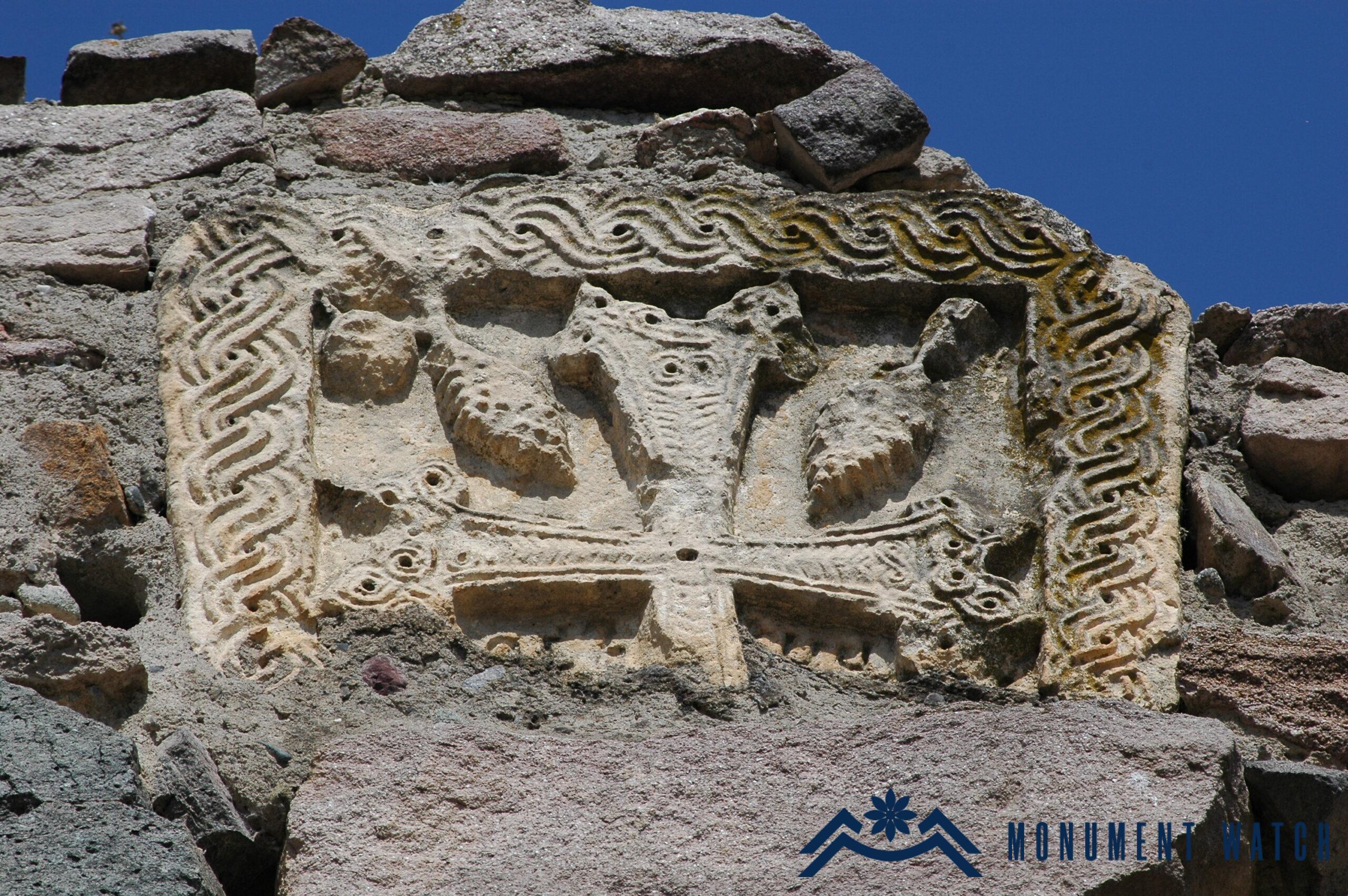The Surb Stepanos church of Khantsk village
Location
The Surb Stepanos church is situated in the heart of Khantsk village, within the Askeran region of the Republic of Artsakh. The village is currently under occupation by the Azerbaijani army.

Historical overview
The construction inscription engraved on the western entrance lintel (Fig. 2) indicates that the church was built in 1673 by Catholicos Petros from Caucasian Albania and members of his family, who hailed from the village of Khantsk. "In the summer of 1122, I, Petros, Catholicos of Aghvank from the village of Khantsk, alongside my father Mankasar, my mother Adhan, and my elder brother Ishkhan, along with his sons Hovhannes, Papajan, and his grandson Mankasar, and grandmother Khatun, built a church in commemoration of ourselves and our departed kin" (CAE 1982, 143, Barkhutareants 1895, 159).
Architectural-compositional examination
The church is constructed using local rough limestone, both large and small stones, held together with lime mortar. Notably, the entrance, curbstones, and windows exhibit polished craftsmanship. It boasts a rectangular single-nave design, internally vaulted. The structure's walls, tabernacle vault, and vault-bearing arches serve as its foundation. Featuring a semi-circular apse with a dome, the church includes one sacristy each to the north and south. Unfortunately, the original height of the stage has not been preserved, now aligning with the floor of the prayer hall. Access to the church is solely from the west side, and in the 19th century, the windows underwent widening.
Above the window of the western facade, the upper section of a white limestone khachkar stands, bearing the preserved date "(1235)" (Figs. 7, 8). Additionally, within the church's interior, a khachkar from the 12th-13th century is encased to the wall, featuring a sculpture depicting a priest holding a jug of wine and a cup (Figs. 9, 10). The inscription is damaged, yet it can be reconstructed as follows: “It was the summer of 650 (1201). I erected this cross for Kh\ori[shah?].”
On the northern side of the Surb Stepanos church, there was a khachkar with the inscription: “In the year 679 (1230), I, Hayrapet, Petros, Vardan, Yohan, erected this cross to my mother, who was pious and cared for the poor. Remember in your prayers” (CAE 5, 143). On the southern outskirts of the village, there are several khachkars (Figs. 11-13). One of them was moved from the territory of the church, and another khachkar bears the inscription: “In the name of the Holy Trinity, I, Sostanes and Barsegh, erected this cross to our father Hayrapet and our mother Ramsim. We beg you, when you worship it, remember in your prayers, 702nd (1253)” (CAE 5, 143).
The condition before and after the war
The church remained undamaged during the Artsakh wars. However, during the Soviet era, like many other village churches in Artsakh, it served as a warehouse. It was during this period that a wider entrance was opened from the south side, and a small hall was built in front of it (Fig. 14). In recent years, the church grounds have been improved, with a new tin roof installed, along with waterspout and a cross. There is no available information on its current status.
Bibliography
- Barkhutareants 1895 - M. Barkhutareants, Artsakh, Baku.
- CAE 5 - Corpus of Armenian Lithography, Issue 5, Artsakh/compiled by S. Barkhudaryan, Publishing House of the Academy of Sciences of Armenian Soviet Socialist Republic, Yerevan, 1982.
- The Surb Stepanos Church of Khantsk village, http://monuments.nk.am/pages.php?al=home&id=757&act1=more&act=filter&mtype=12&searchword=%D4%BD%D5%A1%D5%B6%D6%81%D6%84.
The Surb Stepanos church of Khantsk village
Artsakh













